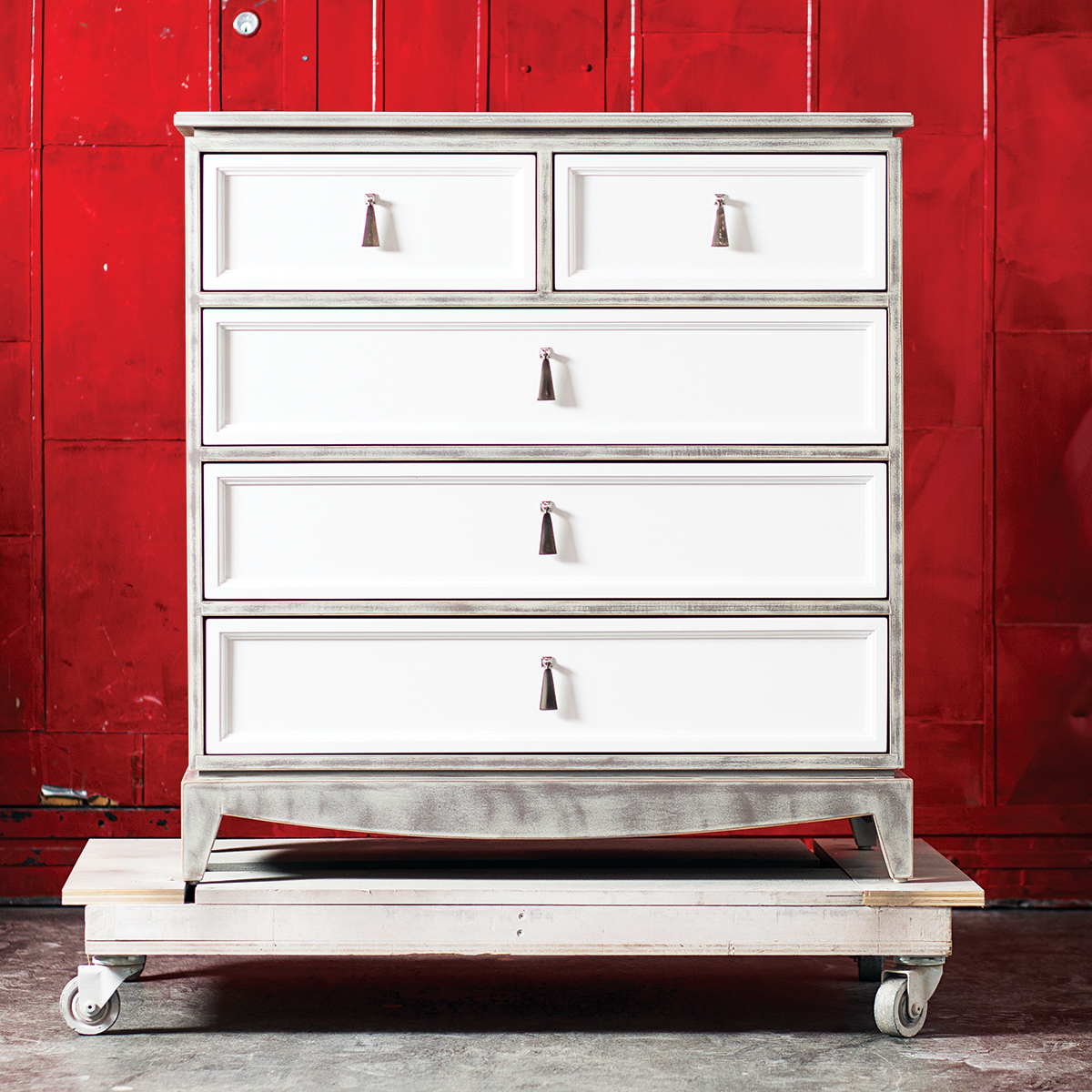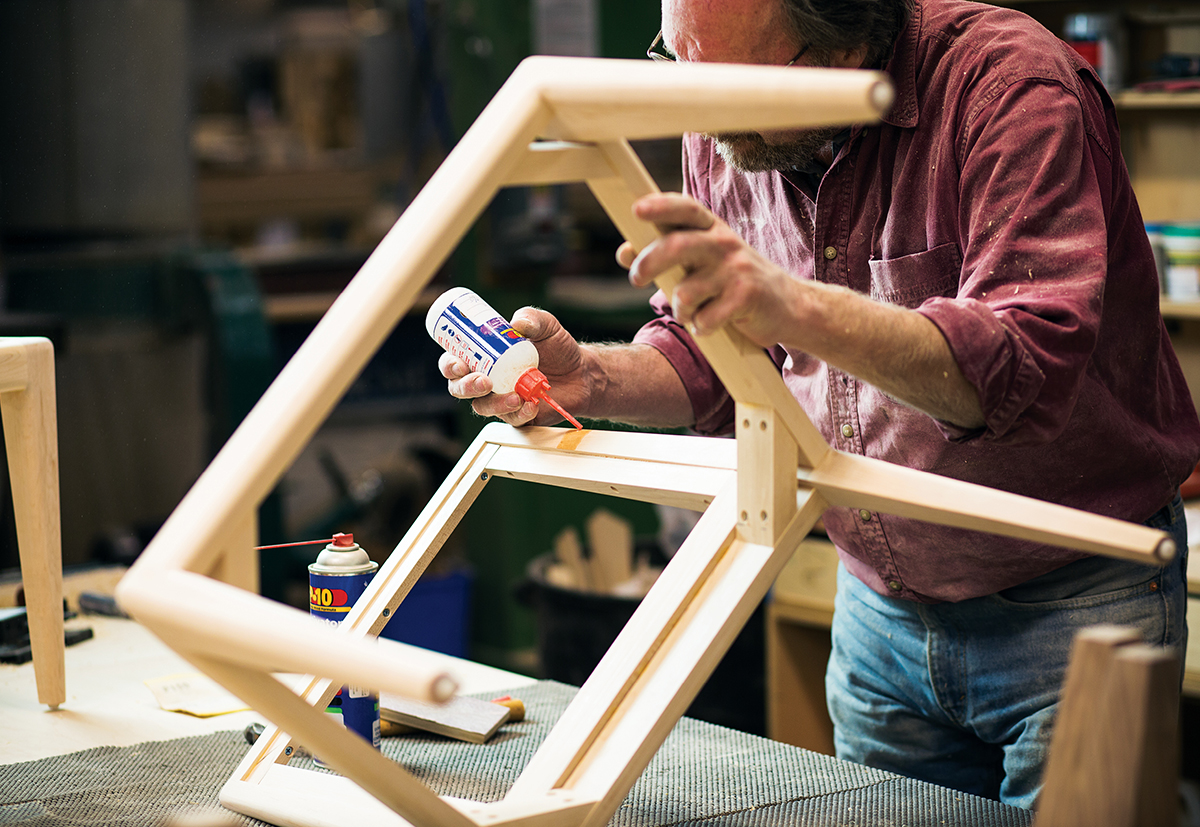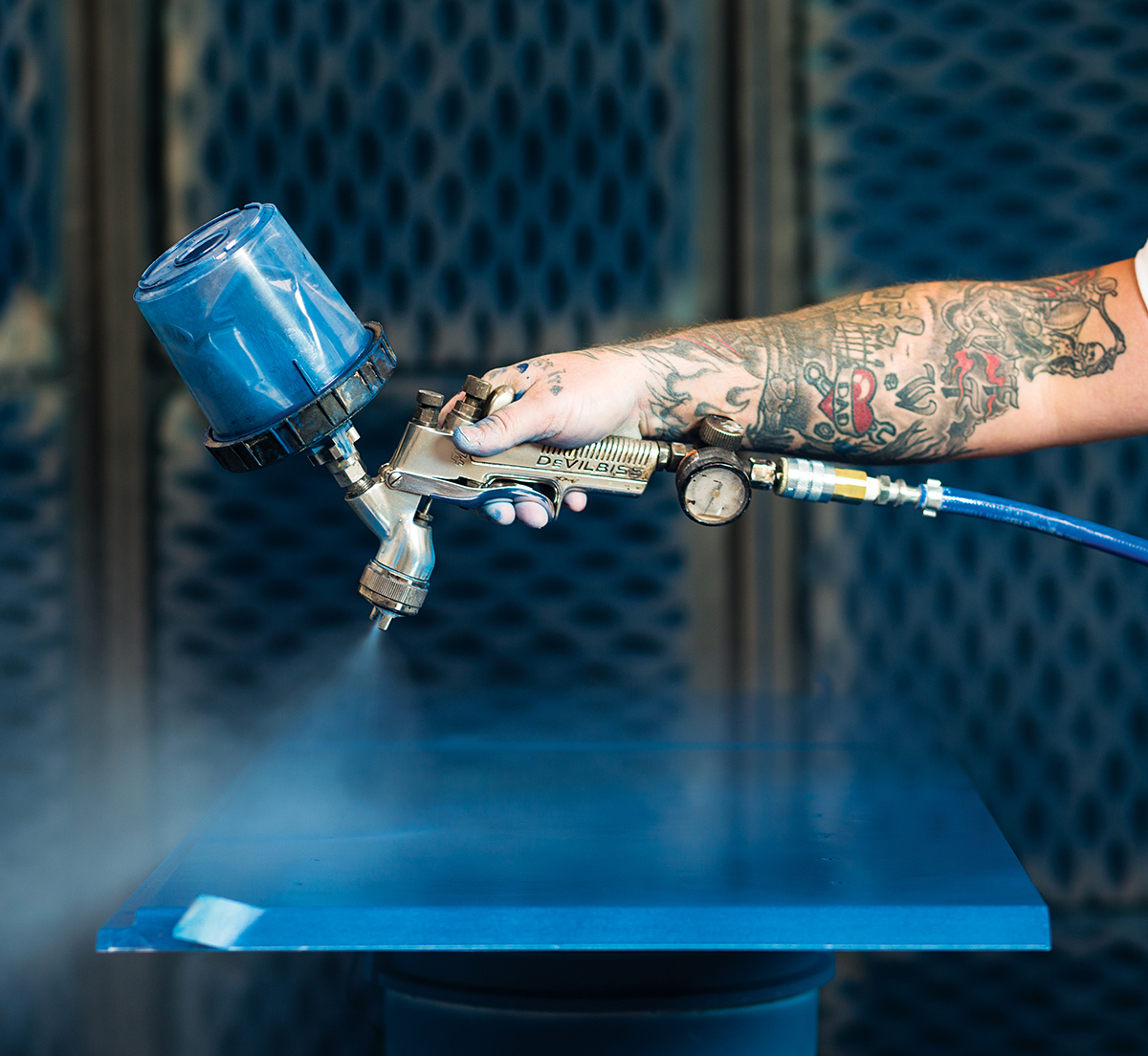Ducduc Children’s Furniture Is Built to Last

Photograph by Pat Piasecki
When he was expecting his first daughter, Manhattan venture capitalist Philip Erdoes was surprised to discover that modern, eco-conscious, and smart nursery furniture simply didn’t exist. First he got frustrated, and then he seized the opportunity.
In 2005 he cofounded ducduc, a line of contemporary children’s furniture meant to help kids develop their “aesthetic personality,” or at least please design-savvy parents. Erdoes enlisted architect Brady Wilcox to design sustainably made, long-lasting pieces that grow with your child: cribs that transition into toddler beds, modular storage units that can be added onto as needs change.
Wilcox had made his name in retail architecture with clients such as Ralph Lauren and John Varvatos when Erdoes approached him. “Both Philip and I had different kinds of manufacturing experience—he in China—and from the get-go we knew that we were not interested in going down that road,” Wilcox says. “We wanted to be in control of quality, › material, and finishes—and [to be confident] that we weren’t putting out a product that could be in any way harmful.”

A master builder custom-upholsters the seat of an “Eddy” rocker with Marimekko fabric in the upholstery studio, located in a separate part of the factory that’s kept dust-free. / Photograph by Pat Piasecki
For a few years, ducduc manufactured all pieces in Amish country, in Lancaster, Pennsylvania, chosen for its “old-school kind of crafting,” Wilcox says, until the brand grew too big. In 2009 production moved to a restored 1890s barn in Torrington, Connecticut, where 40 employees design and manufacture the pieces. The production team is divided into three departments: machining, where parts are cut; assembly; and the finish group, which installs hardware, paints, and tests pieces for safety and functionality. The finish group also includes a number of fine artists who contribute thoughts about—and then execute—distinctive painting techniques. “Bringing artists into the factory is a lot of fun, and sparks ideas about different ways to do things,” Wilcox says.
Employees often move between departments. “We didn’t particularly advertise for furniture makers or woodworkers. A lot of people with various experiences came through looking for work,” Wilcox says. “So we looked back to Amish culture, where everybody lends a hand. One day you’d see the grandfather machining parts, and three days later he’d be in the paint booth painting stuff.” The resulting philosophy: Hire those who “have the will if not necessarily the talent” and then train them for what Wilcox hopes will be a culture in which employees want to spend their entire careers.
All pieces are made to order, typically in eight to 10 weeks, though a select number of the brand’s most popular pieces, including cribs, dressers, and changers, are part of ducduc’s “quick-ship program,” which has a four-week turnaround. Some of the wood is sourced from around New England; all metalwork is by local shops; and all paints are water-based. “It’s high quality, made in the U.S., and incredibly green,” says Boston interior designer Erin Gates, who likes ducduc so much that she put two pieces—the “Campaign” crib and the “Morgan” changer—in her own nursery. “People love that items are made of solid wood, not [engineered wood] MDF, and that all of their amazing finishes are low-VOC, which is very important when considering items for a baby. The design is also modern and unlike anything else on the market.” But best of all, she says, is the longevity: “I know my [own pieces] will last many years, both in terms of durability and style. I could even put the changer in a guest room, and it would look totally chic.”
Wilcox says two or three launches a year draw inspiration from fashion, car design, and color trends—customer demand, for example, led to a new line of headboards for fall 2015. “We really like to hear what customers are asking for,” he says. “We spend a lot of time evaluating how we’re doing, how we can do it better, how we can waste less. But our most frequent requests [are from existing clients] who just want to know how they can keep us around for as long as they can.”

Clockwise from left: A master finisher custom-paints the interior base of a drawer in Hot Lips, a trademark ducduc option that allows homeowners to add subtle personality to a piece; spools of thread in the factory’s upholstery shop; sixty-five basic wood color finishes, which include a solid color or a wood grain finish, can be custom mixed-and-matched to create thousands of possible shades. / Photographs by Pat Piasecki

A master builder glues the base of a custom piece during the assembly stage. / Photograph by Pat Piasecki

Clockwise from top left: Fabric swatches in the upholstery studio—there are more than 100 different fabrics to choose from. Clients can also request something made from their own material; A list of paint colors and combinations in the spray room. All ducduc paint colors are proprietary to ducduc and mixed in-house; A master builder hammers the railing of a crib. / Photographs by Pat Piasecki

A master finisher applies a custom color match to an armoire drawer. / Photograph by Pat Piasecki


